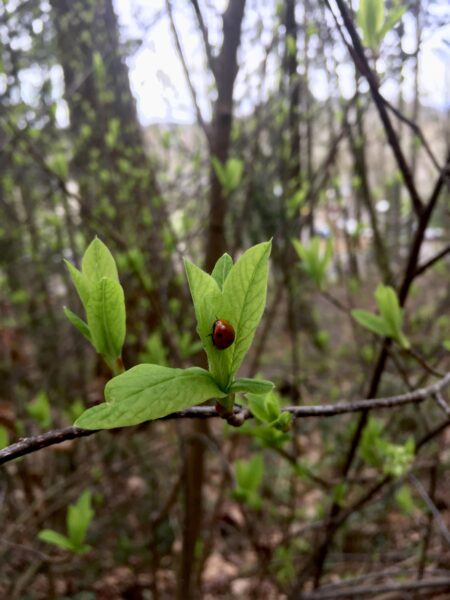What Ice Age Floods Have to do with Your Garden
February 12, 2023
The thunk, thunk of a chef’s knife nearby, Abby and I swapped stories at Lovely in downtown Springfield. It was late January. The new year buzz was as strong as the coffee in my veins, as rich as the soil in Ami and Jeff’s garden, as fertile as the friendship between us. Talk of that chocolate cake soil in the Cal Young neighborhood of Eugene led to talk of clay in the South Hills and in the Amazon lowland neighborhoods, in nearly every other yard we work in. Those who live in the southern Willamette Valley know clay soil. Yes, there’s some blessed like Ami and Jeff with alluvial deposits in the river’s floodplain, lucky them, but most homes here are rooted in clay ground.
I asked Abby if she knew about the Missoula Floods. I remember the first time I heard of them and, man, did I get excited to share the tale with her! This is my favorite story of our place. These floods are a major reason that we work in ground dense with the sticky fine particles of clay. The most recent in an incomprehensible progression of big geologic events that have shaped the Pacific Northwest, the story of the Missoula Floods is one I want all who garden here to know.
They happened repeatedly over thousands of years, over and over again, massive amounts of water carved and deposited and created the body of the land we live on. During the last ice age, a tongue of ice, a fat lobe, a plug, extended across the Clark Fork river in northern Idaho. I know that sounds long ago and far away. Hang with me a minute in a broader context of time and place. We’ll return to familiar ground soon. Behind this ice dam, water pooled and stretched and grew immense in volume until its force lifted the edge of the plug. Waters raged forth, draining what we now call glacial Lake Missoula in a devastating moment. The channeled scablands of Washington with their awesome rock formations of exposed basalt resulted. The long drops of waterfalls along the Columbia Gorge owe their majesty to the scouring power of these floods. Water backed up behind narrow openings in the Columbia, flooding wide, carrying boulders, trees, sediment. One of these narrow canyons, west of what is now Portland, caused the flood to fill the Willamette Valley southward, pushing waters heavy with suspended sediment all the way to present day Eugene and Springfield. Flowing eventually, as all things do, to the Pacific Ocean, the waters receded from the valleys and lowlands. In the most backwater recesses like here in the southern Willamette Valley, layer upon layer of the finest sized sediment, known as clay, were left behind after each flood.
Picturing geologic time stretches the mind, blows the small ego away, offering a feeling of insignificance while simultaneously connecting you to all things. The next time you scrape clay from your shovel blade, imagine the forces that carried it here. Imagine the distance, the time scale, the awesome way historic climate shapes our experience of the present. Will this help you appreciate gardening in clay soil any more? I hope so. Context is everything. You garden where you are and where you are has many stories to tell.
Advice for gardener’s on clay ground too often starts with amending, with recipes for changing what is to something considered ideal—gypsum, sand, compost, magic formulations concocted in heavy buckets and laboriously applied. Year after year after year. How many times have you read the tag of a coveted plant at the nursery only to learn that “well-drained soil” is required? Did you stop to consider that perhaps the nursery industry favors these types of plants because they match the character of the potting medium they grow everything in? Or that poorly drained clay soils in nature are full of a diversity of wonderful plants? The kniphofia that grows so robustly, offering up wave after wave of pineapple popsicle spears in one of our South Hills gardens, remained weenie and sad in my own sandy floodplain ground. And the beauty of winter twigs from red osier dogwood is more vibrant with the rich mineral accumulation when grown in clay soil.
Sure, a wheelbarrow of compost or leaf mold is always a nice thing to add for planting, but first choose plants that are suited to what nature gave you, not what your friends out River Road are working with.

Osoberry, bright in late winter, will happily grow in clay

This is a very useful idea. I have the strangest powdery pale yellow soil that would not compact behind our house when it was built. There is also clay that sticks to shoes when wet, building Frankenstein boots, but dries as hard as concrete. We also have the Basalt flows that predate the floods by millions of years overlaying sandstone below. Those rocks roll down the hill and have piled up on one end of our property. Wenatchee was under a lake and our place was about 300′ below that surface a long time ago!
Wow Lisa, imagining 300’ of water over your place makes me feel so tiny! Have you found plants that grow well in the different types of soil you have?